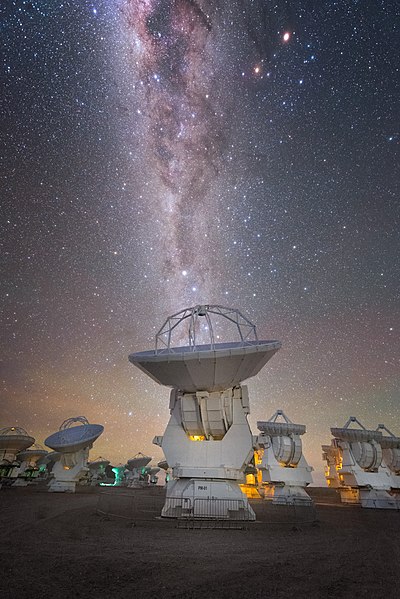File:Atacama Large Millimeter-submillimeter Array, Milky Way.jpg

Size of this preview: 400 × 599 pixels. Other resolutions: 160 × 240 pixels | 320 × 480 pixels | 512 × 768 pixels | 683 × 1,024 pixels | 1,367 × 2,048 pixels | 4,912 × 7,360 pixels.
Original file (4,912 × 7,360 pixels, file size: 12.38 MB, MIME type: image/jpeg)
File history
Click on a date/time to view the file as it appeared at that time.
| Date/Time | Thumbnail | Dimensions | User | Comment | |
|---|---|---|---|---|---|
| current | 14:16, 5 June 2020 |  | 4,912 × 7,360 (12.38 MB) | Acagastya | {{Information |description ={{en|1=One of the most exhilarating results in modern astronomy is the knowledge that the Universe is full of worlds beyond our Solar System, known as exoplanets. Increasing evidence suggests that the majority of stars in the Universe have planets whizzing around them; one such system can be seen in this majestic Picture of the Week. The antennas here are among the 66 that make up the Atacama Large Millimeter/submillimeter Array (ALMA), located on the Chajnanto... |
File usage
The following page uses this file:
Global file usage
The following other wikis use this file:
- Usage on en.wikipedia.org
